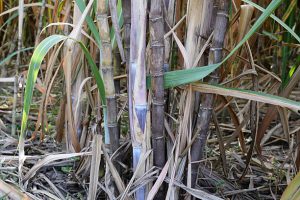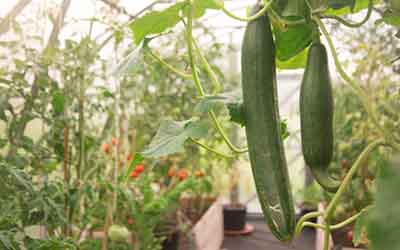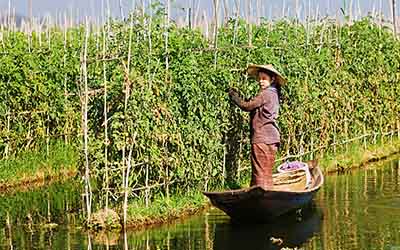Sugarcane farming has been a cornerstone of agriculture in many regions across the globe, providing the raw material for sugar, biofuels, and various by-products.
Traditional methods of sugarcane planting have dominated the industry for centuries, primarily focusing on flatbed and furrow planting techniques.
These conventional approaches, while effective in certain contexts, often require significant water, labor, and can lead to issues such as soil erosion and inefficient nutrient use.
As the agricultural sector faces the dual challenges of increasing productivity and sustainability, innovative methods like the pit planting technique are gaining attention.
The pit planting method represents a paradigm shift in sugarcane cultivation, emphasizing water conservation, enhanced yield, and soil health.
Unlike the traditional methods that spread sugarcane sets across vast fields in rows, the pit planting technique involves digging pits and planting sugarcane sets within these confined spaces.
Why the Pit Planting Method of sugarcane?
This method is particularly suited to regions prone to water scarcity and soil erosion, offering a more sustainable and efficient way to cultivate sugarcane.
Pit planting requires the digging of pits at specified distances across the sugarcane field.

The dimensions of these pits can vary but are typically designed to accommodate the growth requirements of sugarcane roots, ensuring adequate space for expansion and access to nutrients.
Once the pits are prepared, sugarcane sets are planted within them, either singly or in small bundles.
The pits are then backfilled with soil, sometimes enriched with organic matter or fertilizer to support initial growth.
This localized method of planting concentrates resources and care where it’s most needed, directly around the sugarcane sets.
Historical Origins of pit planting method of sugarcane
The pit planting method is not entirely new but rather an adaptation of practices that have been used in various forms of agriculture for centuries.
Its application to sugarcane cultivation, however, is a relatively recent innovation, born out of the need to address specific challenges such as water scarcity and soil degradation.
By learning from past agricultural practices and adapting them to modern needs, the pit planting method represents a blend of traditional wisdom and contemporary agricultural science.
The most significant difference between pit planting and conventional sugarcane planting methods lies in resource utilization and efficiency.
Traditional row planting often leads to significant water loss due to evaporation and runoff, especially in areas without sophisticated irrigation systems.
In contrast, pit planting localizes water and nutrients directly to the sugarcane sets, reducing waste and enhancing plant growth.
Benefits of Pit Planting Method for Sugarcane
The pit planting method introduces a suite of advantages over traditional sugarcane cultivation techniques, marking a significant shift towards more sustainable and productive agricultural practices.
These benefits not only contribute to the environmental sustainability of farming practices but also bolster the economic viability of sugarcane cultivation.
- Water Retention
- Increased Sugarcane Yield and Sugar Content
- Reduced Soil Erosion and Better Soil Health
- Cost-Effectiveness in Terms of Labor and Maintenance
Water Retention
One of the most significant advantages of the pit planting method is its superior water retention capabilities.
By concentrating water in the pits where sugarcane sets are planted, this method ensures that water is directly available to the plants’ roots, minimizing evaporation and runoff.
This targeted irrigation approach leads to a more efficient use of water resources, a critical factor in regions experiencing water scarcity.
The efficiency of water use is further enhanced by the possibility of integrating drip irrigation systems into the pits, ensuring that water and nutrients are delivered directly to the root zone of the sugarcane plants.
Increased Sugarcane Yield and Sugar Content
The pit planting method has been shown to increase both the yield and sugar content of sugarcane.
This boost in productivity is attributed to several factors, including improved soil conditions, better nutrient uptake, and reduced competition for resources.
The localized enrichment of soil within the pits can lead to more vigorous root development and plant growth, resulting in higher biomass and sugar production.
Reduced Soil Erosion and Better Soil Health
Soil erosion is a major concern in conventional sugarcane farming, especially in areas with sloping terrain or heavy rainfall.
The pit planting method helps mitigate this issue by reducing the amount of exposed soil and concentrating cultivation activities within confined areas.
This localized approach not only prevents soil erosion but also promotes better soil health through the incorporation of organic matter and targeted fertilization.
As a result, the soil structure is improved, supporting a more vibrant microbial ecosystem and enhancing soil fertility over time.
Cost-Effectiveness in Terms of Labor and Maintenance
Although the initial setup for pit planting may require additional labor to dig the pits, the overall labor and maintenance costs can be lower compared to traditional row planting.
This reduction in costs is due to several factors, including more efficient water and nutrient use, reduced need for weeding and pest control, and the potential for higher yields from a given land area.
By optimizing resource use and reducing the need for constant intervention, pit planting can lead to significant cost savings for sugarcane farmers.
Step-by-Step Guide to Implementing Pit Planting
Implementing the pit planting method in sugarcane cultivation requires careful planning and execution.
Step 1: Preparing the Land
- Site Selection: Choose a well-drained field with adequate sunlight exposure. The site should have a relatively flat or gently sloping terrain to minimize water logging and soil erosion.
- Soil Testing: Conduct soil tests to determine the nutrient profile and pH level. This information will help tailor soil amendments to the specific needs of your sugarcane crop.
- Land Clearing and Levelling: Clear the land of weeds, debris, and any previous crop residues. Level the field to ensure uniform water distribution and reduce the risk of water logging.
Step 2: Digging the Pits
- Marking Pit Locations: Depending on the variety of sugarcane and the specific conditions of your field, mark the locations for the pits ensuring optimal spacing. Common spacing is about 90 cm between pits, but this can vary based on local conditions and sugarcane variety.
- Pit Dimensions: Dig pits with dimensions that accommodate the root system of sugarcane plants, typically around 45 cm in width and depth. Adjust the size based on soil type and moisture levels.
- Soil Enrichment: Before planting, consider mixing the excavated soil with organic compost or well-decomposed manure to enhance soil fertility. This step is crucial for improving the nutrient availability to the sugarcane sets.
Step 3: Planting Sugarcane Sets
- Selection of Sugarcane Sets: Choose healthy and disease-free sugarcane sets for planting. Ensure that each set has at least 2-3 viable buds.
- Planting: Place the sugarcane sets horizontally or vertically in the center of the pit and cover them with a mixture of soil and organic matter. The sets should be planted at a depth where the top buds are just below the soil surface.
- Watering: After planting, water the pits thoroughly to establish initial moisture levels necessary for germination. Ensure not to over-water to avoid water logging.
Step 4: Post-Planting Care
- Irrigation: Maintain adequate moisture levels through controlled irrigation, taking care not to saturate the soil. Drip irrigation or micro-sprinkler systems can be highly effective in pit planting setups.
- Weed Management: Regularly monitor and remove weeds around the pits to reduce competition for nutrients and water.
- Pest and Disease Control: Implement integrated pest management strategies to protect the sugarcane crop from pests and diseases.
- Nutrient Management: Based on soil test results and crop requirements, apply additional fertilizers or soil amendments during the growth period to support optimal plant development.
Step 5: Monitoring and Maintenance
- Growth Monitoring: Regularly inspect the sugarcane plants for signs of stress, pest infestation, or nutrient deficiencies. Adjust care practices as necessary to address any issues.
- Soil Moisture Management: Ensure consistent soil moisture levels to support healthy growth, especially during dry periods. Mulching around the pits can help retain soil moisture and suppress weed growth.
Best Practices for Sugarcane Care in Pit Planting
After establishing sugarcane through the pit planting method, ongoing care is crucial to ensure optimal growth, high yields, and superior quality of the crop.
- Efficient Irrigation
Utilize drip irrigation systems where possible to deliver water directly to the base of the sugarcane plants, minimizing water wastage and ensuring deep soil penetration.
- Watering Schedule
Adjust irrigation based on the season, plant growth stage, and weather conditions to meet the crop’s water requirements without overwatering.
- Soil Testing
Regularly test soil to determine nutrient needs and adjust fertilization practices accordingly.
- Organic Matter
Incorporate organic compost or manure into the pits prior to planting and as top dressing to improve soil fertility and structure.
- Targeted Fertilization
Apply fertilizers in the vicinity of the pit to ensure nutrients are readily available to the sugarcane roots, avoiding wastage.
- Mulching
Use organic mulch around the plants to suppress weed growth, retain soil moisture, and add nutrients as it decomposes.
- Herbicides
If necessary, use selective herbicides judiciously to control weed populations, taking care not to harm the sugarcane.
- Integrated Pest Management (IPM)
Monitor for pests and diseases regularly and employ IPM strategies, combining biological, cultural, mechanical, and chemical controls to manage pests with minimal environmental impact.
- Growth Monitoring
Regularly inspect sugarcane plants for signs of stress, such as wilting, discoloration, or stunted growth, which could indicate water, nutrient, or pest problems.
- Disease Management
Be vigilant for signs of diseases like red rot or smut. Apply appropriate fungicides when necessary and remove infected plants to prevent spread.
- Harvest Timing
Monitor the crop to determine the optimal time for harvest, based on the maturity of the plants and sugar content, to maximize yield and quality.
Common Challenges in Pit Planting
- Initial Labor and Cost
The initial setup for pit planting can be labor-intensive and costly, especially if done manually or on a large scale without appropriate tools.
- Waterlogging
In areas with heavy rainfall or improper drainage, pits can accumulate water, leading to waterlogging and potentially harming the sugarcane plants.
- Pest and Disease Concentration
The localized nature of pit planting can sometimes lead to the concentration of pests and diseases, if not managed properly.
- Soil Fertility Management
Ensuring that each pit has the correct balance of nutrients can be more challenging than in traditional row planting, requiring precise management.
Strategies for Addressing Pit Planting Challenges
- Leveraging Technology and Community Resources
- Improving Drainage
- Integrated Pest Management (IPM)
- Soil Testing and Tailored Fertilization

My final thought on Pit planting method of sugarcane
The pit planting method represents a significant advancement in the cultivation of sugarcane, offering a sustainable solution to some of the most pressing challenges in agriculture today.
This method not only improves sugarcane yield and quality but also contributes to the resilience of farming systems against the backdrop of climate change and resource scarcity.
The transition to innovative farming techniques like pit planting underscores the importance of embracing change in the agricultural sector
Recommendations
Best farming technology in India
10 Environmental benefits of beekeeping
6 Problems faced by farmers in getting loans
How to get a loan to start a cattle farm




